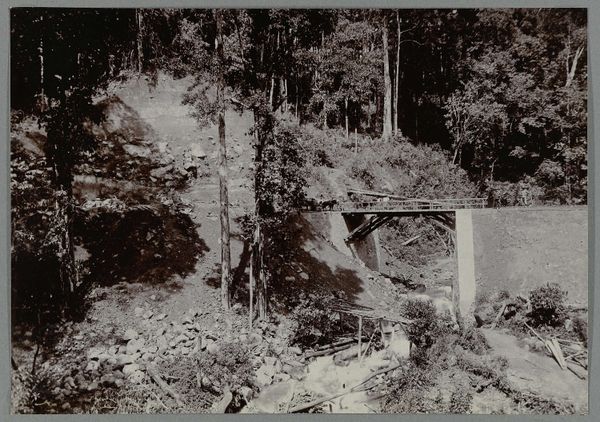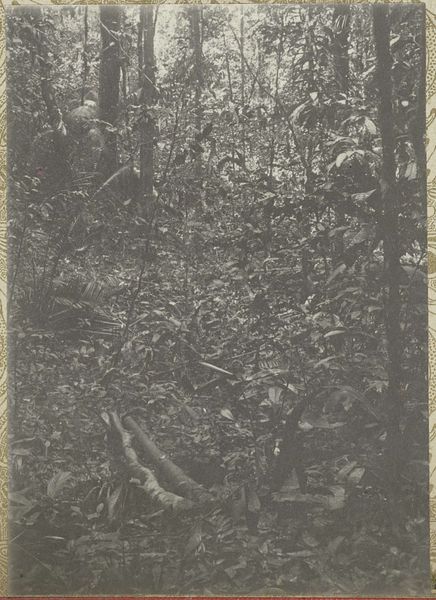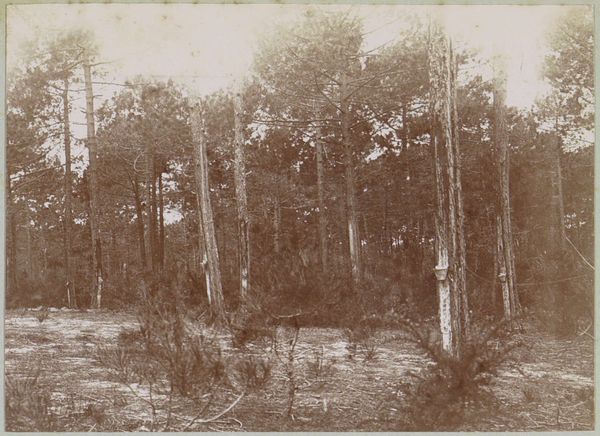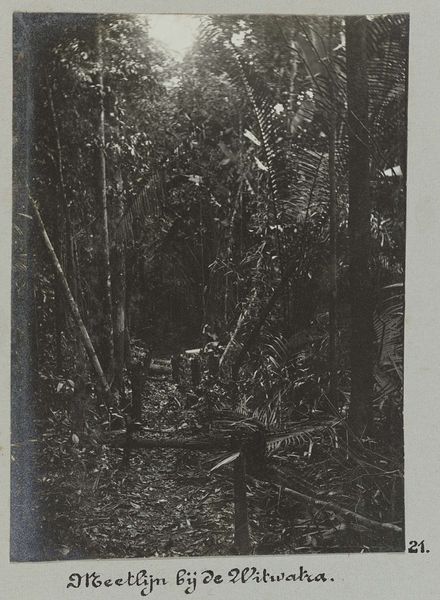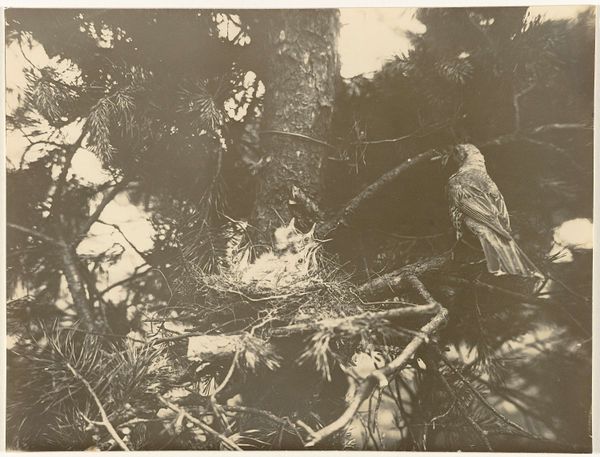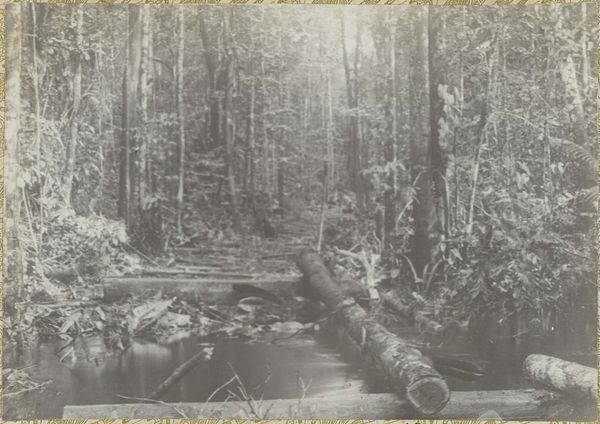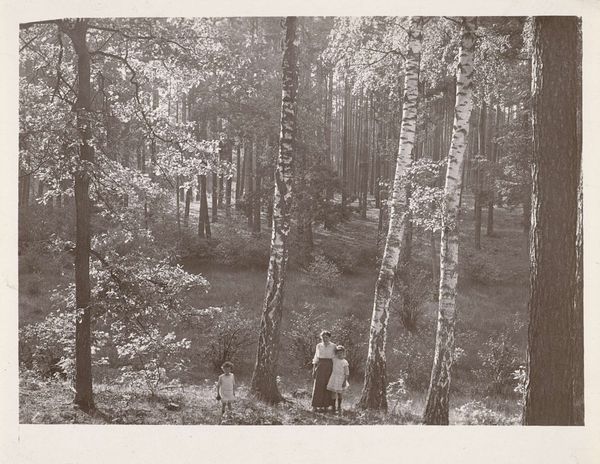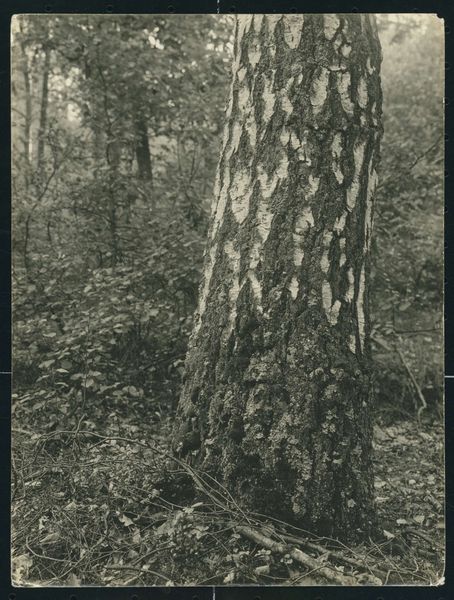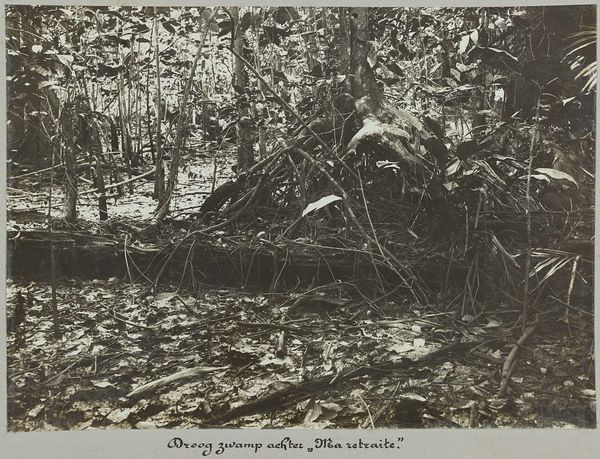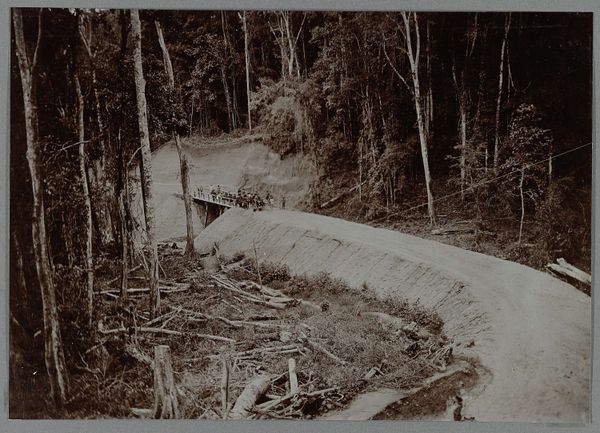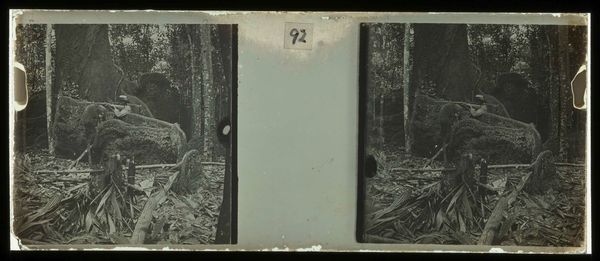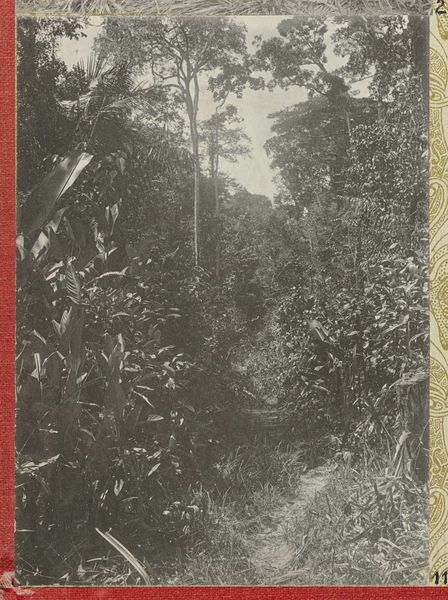
Dimensions: height 80 mm, width 111 mm
Copyright: Rijks Museum: Open Domain
Editor: We're looking at Hendrik Doijer's gelatin-silver print, "Hut in het bos," dating from around 1903 to 1910. I find it so evocative; it feels both documentative and…romantic, somehow. What’s your take on this image? Curator: This photograph is particularly interesting when viewed through the lens of colonial history and its presentation within European and Western museums. Consider Doijer, a Western photographer, capturing this 'hut in the woods'. It raises questions about power dynamics: who is building the hut, for what purpose, and who is the intended audience for this image back in Europe? Editor: So, you're suggesting we look beyond the surface beauty to consider the socio-political context of its creation and consumption? Curator: Exactly. The 'exotic' wilderness and simple architecture depicted cater to certain European desires for adventure and a simplified 'primitive' life, simultaneously reinforcing existing power structures and notions of Western superiority. Was Doijer consciously participating in that reinforcement, or was he attempting a more equitable portrayal? It's difficult to know without further documentation. Editor: That's fascinating. I hadn't considered the potentially problematic gaze implicit in even seemingly objective documentary photography. Does that tension, between artistic value and cultural baggage, always exist in colonial-era art? Curator: Not always to the same degree, but it's almost invariably present, demanding our critical engagement as viewers and institutions. We must grapple with the intentions and societal forces active at the time, ensuring our presentation encourages reflection and conversation around them. Editor: I appreciate your highlighting the role of the institution – like the museum where this will be displayed. I’ll definitely view similar pieces with a much more critical eye moving forward. Curator: And that critical awareness allows us to see this photography with fresh eyes, appreciate the aesthetic while acknowledging its historical and cultural implications.
Comments
No comments
Be the first to comment and join the conversation on the ultimate creative platform.
